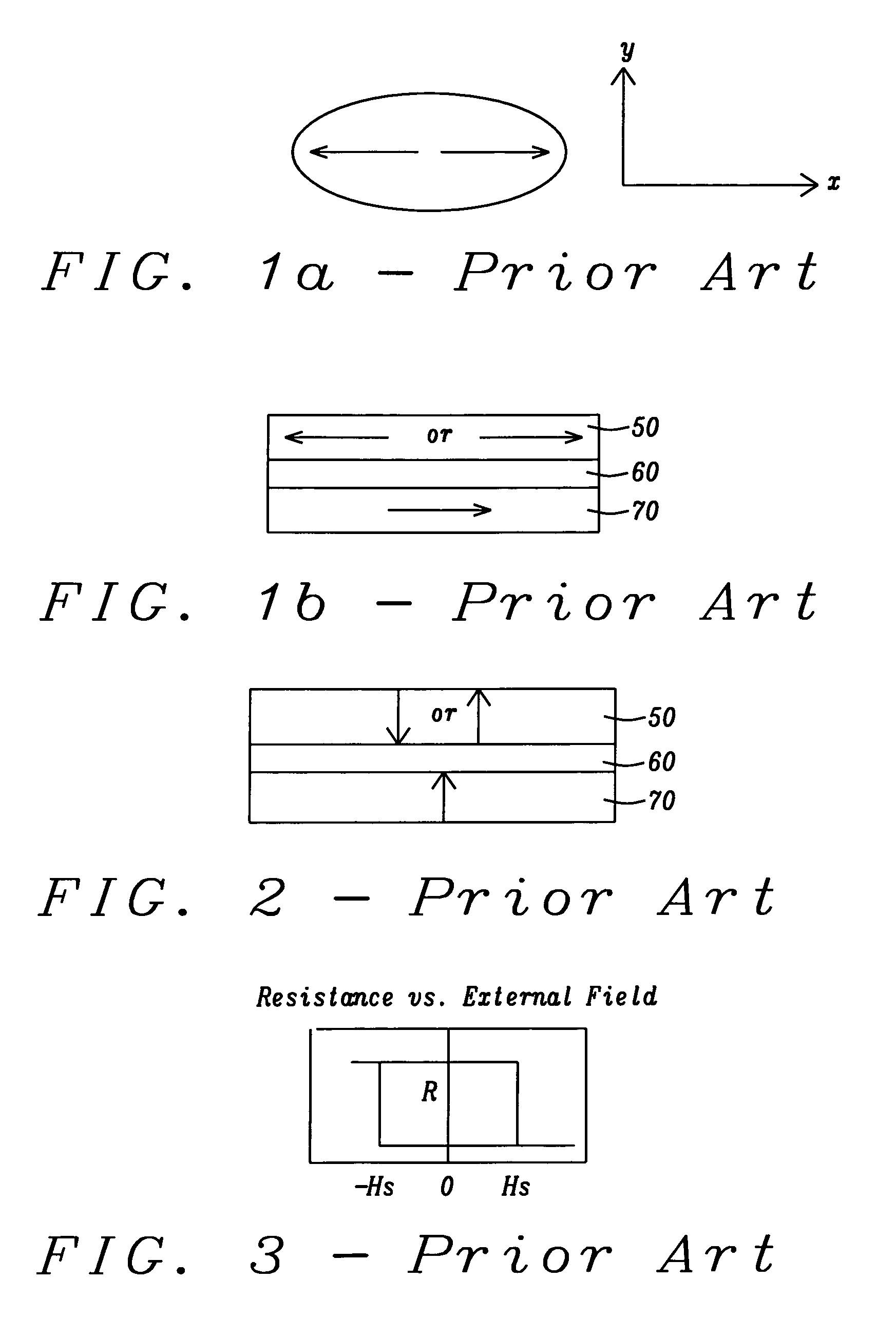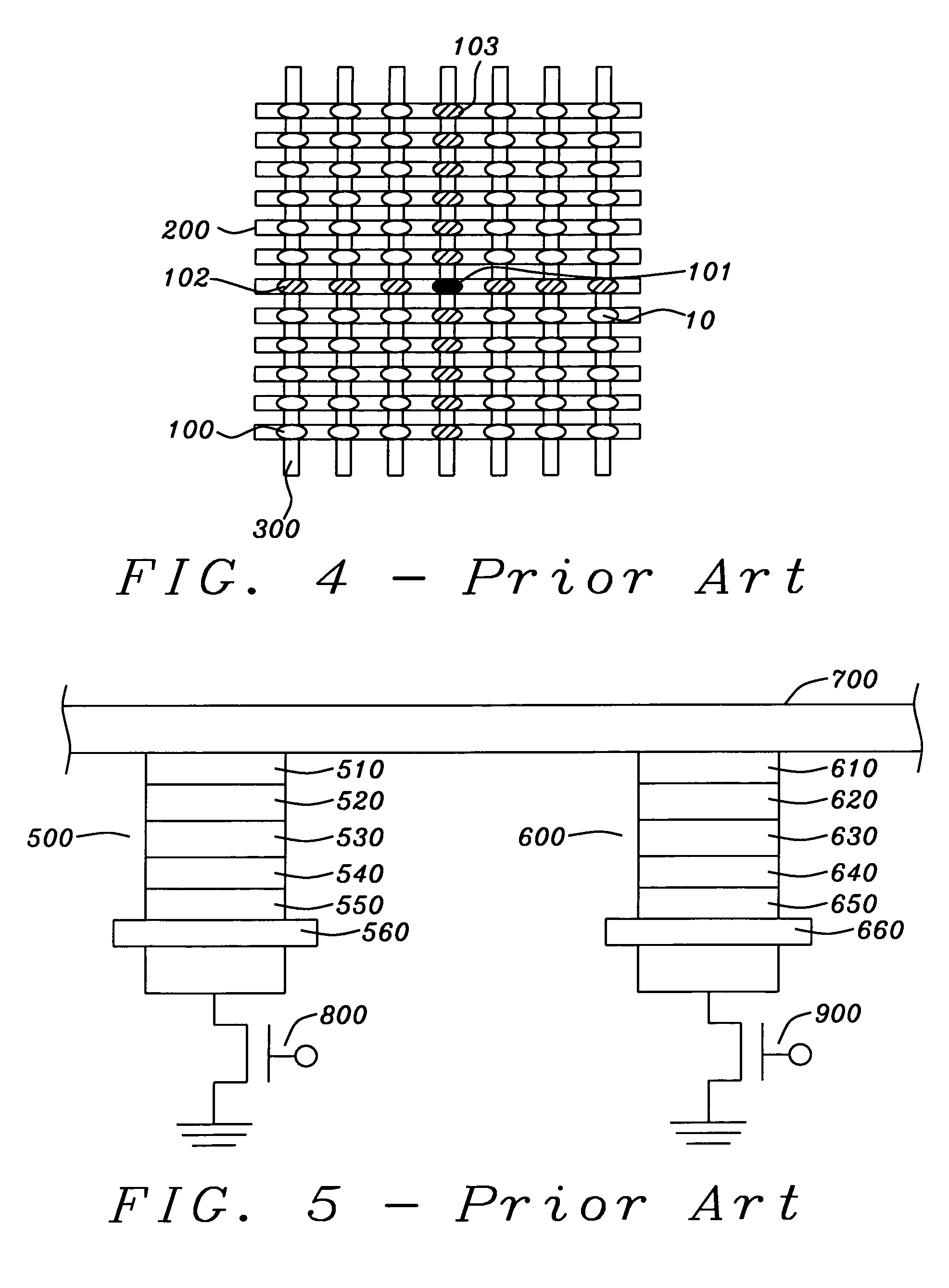Spin momentum transfer MRAM design
a technology of momentum transfer and random access memory, applied in the field of spin momentum transfer random access memory (smtmram) cells, can solve the problems of thermal agitation, cell can still be accidentally programmed, and difficulty in scaling,
- Summary
- Abstract
- Description
- Claims
- Application Information
AI Technical Summary
Benefits of technology
Problems solved by technology
Method used
Image
Examples
Embodiment Construction
[0044]The preferred embodiment of the present invention is an MRAM device of the spin-transfer MTJ variety, incorporating an STT MTJ cell element, in which the free layer is formed as a pair of magnetic (preferably ferromagnetic) layers, called herein magnetic storage layers, coupled by a coupling valve layer. In this construction the preferable ferromagnetic layers are strongly exchanged coupled in a parallel (ferromagnetic) magnetization configuration when the cell temperature is below the Curie temperature of the coupling valve layer, but are magnetostatically coupled in an anti-parallel configuration of magnetizations, when the cell temperature is above the Curie temperature. The exchange coupled state is advantageous for storing and reading information, where the magnetization of the free layer should be highly stable, whereas the magnetostatically coupled state is advantageous for the writing of information, where the magnetization of the free layer is required to be changed a...
PUM
 Login to View More
Login to View More Abstract
Description
Claims
Application Information
 Login to View More
Login to View More - R&D
- Intellectual Property
- Life Sciences
- Materials
- Tech Scout
- Unparalleled Data Quality
- Higher Quality Content
- 60% Fewer Hallucinations
Browse by: Latest US Patents, China's latest patents, Technical Efficacy Thesaurus, Application Domain, Technology Topic, Popular Technical Reports.
© 2025 PatSnap. All rights reserved.Legal|Privacy policy|Modern Slavery Act Transparency Statement|Sitemap|About US| Contact US: help@patsnap.com



